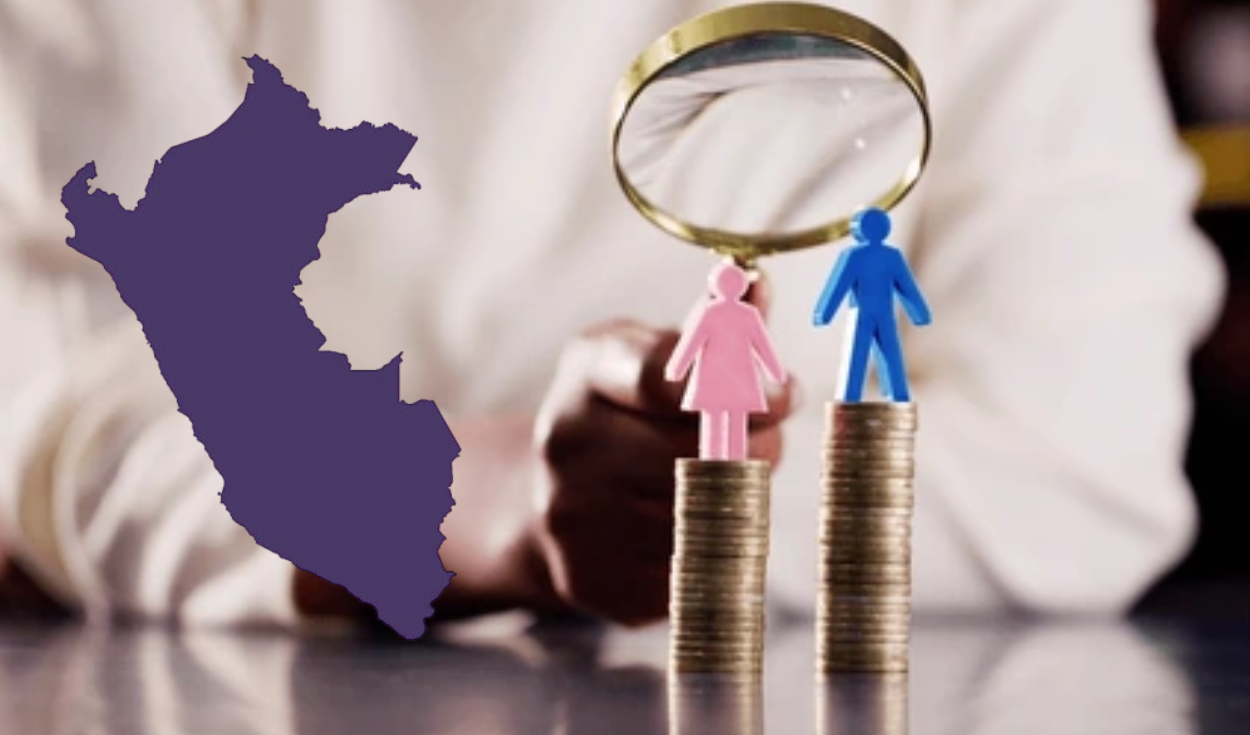
He Peruvian Institute of Economics (IPE) presented the regional index of gender gaps, the first integral analysis that measures gender inequalities in the 25 regions of Peru during the 2019-2024 period. A score closer to 0 is lower gap and a score close to 100 is a greater gap.
Based on 25 indicators grouped into six pillars (labor market, education, health, power and decision -making, financial access and individual autonomy), the study revealed that 14 regions exceed the national score of 32.5, indicating a larger one gender gap In these territories. Moquegua is the region with the lowest gap and Cajamarca the largest.
“We need to point to a society where men and women share responsibilities,” said Elena Conconno, president of women caregivers.
Labor market
And as well as the national survey of time use (INEI, 2011), in 82% of Peruvian households, it is the woman who assumes the greatest responsibility in the domestic and care taskscompared to 16% of households where this work is assumed by man.
“The differences between genders in the distribution of time and the burden of household chores, which fall mainly on women, limit their access to paid work,” said Concern.
Along the same lines, specialists in the sector in dialogue with the Republic explained that the interruption of the professional career for maternity hinders the reintegration of women in the labor market and leads them to look for jobs with more flexible schedules.
Within the Regional index of gender gaps (IRBG), the labor market is the third pillar that most affects gender inequality in the country, with a score of 39.7. At the regional level, Ica is the area with the lowest gap, followed by Metropolitan Lima and Callao with Arequipa, while Huánuco, Piura and Cajamarca present the greatest disparities.
Women face a high rate of Labor informality (73.4%), 4.1 percentage points more than men (INEI, 2024). In addition, 91% of independent workers are in informality, and 13.2% perform unpaid family tasks.
Power and decision making
The participation of women in leadership positions is crucial to guarantee equitable representation in both public and private spaces. In the political sphere, the female leadership drives parity in decision making and a balanced representation that avoids the imposition of stereotypes (a Women, 2024).
However, in the country women have faced a situation of disadvantage in the political sphere at all levels of government. For example, in the regional and municipal elections of 2022, only 5.4% of the elected district mayors were women.
While currently, after 2021 parity and alternation law21 of the 25 regions of the country has a woman as a vice governor, limitations still persist in executive positions. In 2024, Only two women held the position of regional governors (Moquegua and Lima Provinces), which represents only 8% of the total (Ministry of Women and Vulnerable Populations, 2023).
“The lack of state regulation and support aggravates its economic vulnerability, restricting its access to growth rights and opportunities,” Alejandra Dinegro, labor specialist at the National University of San Marcos (UNMSM) warned the Republic.
According to the expert, time is also a determining factor. The difficulty of reconciling work with household responsibilities limits women’s access to leadership positions. Under this reasoning, Leda Pérez, associate professor of the Academic Department of Social and Political Sciences and Researcher of the Research Center of the Universidad del Pacífico (CIUP), explained: “Women often choose careers that allow them labor flexibility, due to their connection with the house.”
For IRBG, power and decision making is the second pillar that most affects gender inequality in the country, with a score of 40.5. At the regional level, Moquegua is the area with the lowest gap, followed by Ica and Arequipa, while Apurímac, Puno and Cajamarca present the greatest disparities.
Individual autonomy
This pillar is composed of indicators that reflect the vulnerabilities faced by women in terms of reproductive rights and physical autonomy. Among them include the ratio of maternal mortality, the adolescent fertility rate, total family violence (physical, psychological and/or sexual) against women aged 15 to 49 years once exercised by the husband or partner, and the femicide rate. Is the scope with the Greater gender gapwith 41.8 points.
Tacna, Lima Metropolitana and Callao and Moquegua lead this pillar. On the contrary, Amazonas, Ucayali and Loreto are located in the last places.
The study presenters highlighted Piura as the region that has presented a lower advance with respect to 2019 at the closure of gaps and this is mainly due to setbacks in school attendance gaps and also in the population without anemia.
Close gender gaps
According to the IPE, to advance in the closure of the gender gaps, a three -axle comprehensive approach is required.
- Economic autonomy: Strengthen care systems, with special attention to rural and low -income areas; Promote schemes that facilitate the labor reintegration of women after motherhood; and promote the formalization of SMEs led by women and their financial inclusion.
- Promotion of human capital: Improve the school performance of girls and adolescents, especially in mathematics; effectively implement integral sex education to prevent teenage pregnancy; and promote family planning.
- Institutional strengthening: Increase the political representation of women and make visible their leadership; reinforce the interventions of the Aurora program; and expand the coverage of women’s emergency centers at regional and provincial level.
Source: Larepublica
Alia is a professional author and journalist, working at 247 news agency. She writes on various topics from economy news to general interest pieces, providing readers with relevant and informative content. With years of experience, she brings a unique perspective and in-depth analysis to her work.












